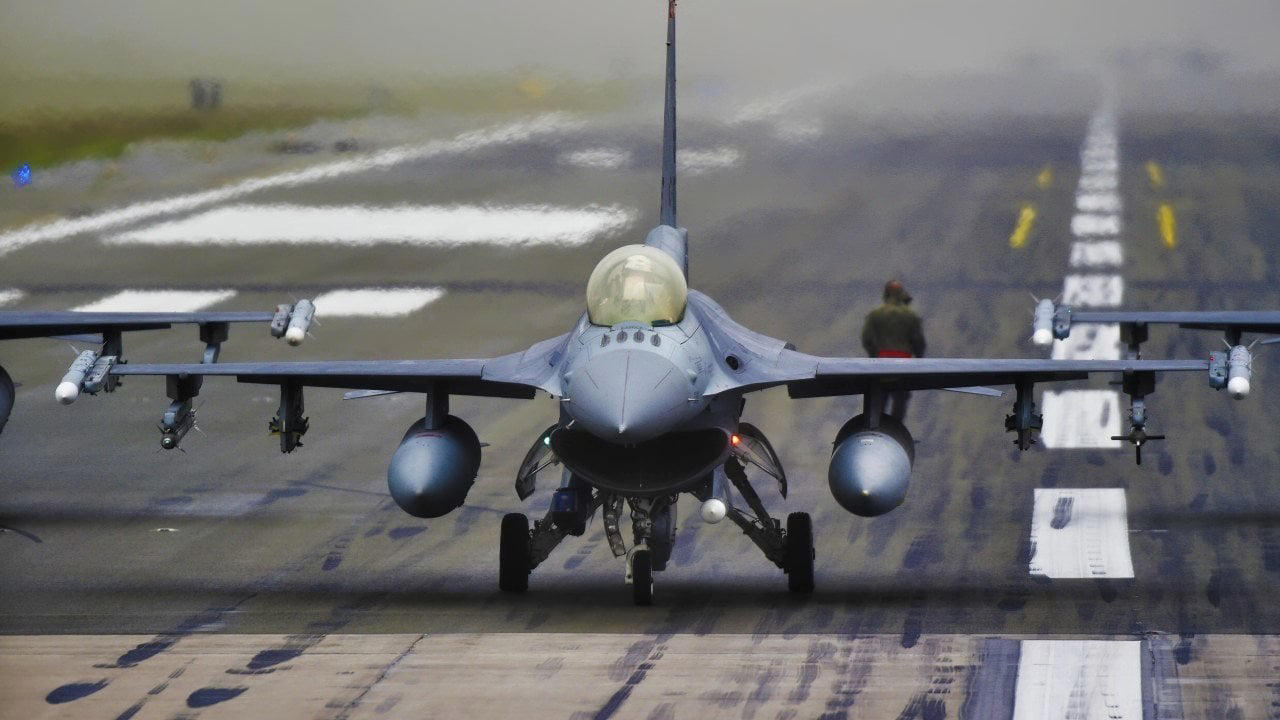Russia Can’t Hide the Fact Its Air Force Is Taking Heavy Losses in Ukraine

What You Need to Know: Russia lost another Su-34 combat aircraft over Ukraine on Saturday, reportedly shot down by an American-made F-16, marking the first air-to-air kill by Ukrainian-operated F-16s. The Su-34, a crucial asset for Russian air operations, has suffered significant losses during the conflict, with up to a quarter of Russia’s pre-war fleet destroyed.
-Pro-Kremlin milbloggers broke the news via Telegram, mourning the loss while simultaneously criticizing the Russian military leadership.
-Analysts suggest that Russia’s mounting combat losses, paired with Western-supplied F-16s entering the fray, could inflame anti-Western sentiment and further strain Russian efforts to maintain air superiority.
Russia Loses Another Su-34 to Ukraine’s F-16 in Historic Air-to-Air Kill
On Saturday, news circulated that Russia lost another combat aircraft. A Sukhoi Su-34 (NATO reporting name Fullback) was reportedly shot down by an American-made F-16 Fighting Falcon, marking the first confirmed air-to-air kill involving a Ukrainian-operated F-16.
Russia may have lost at least three dozen of the Su-34s, accounting for nearly a quarter of its pre-war fleet of 140. While the United Aircraft Corporation (UAC), the subsidiary of the state-owned military-industrial conglomerate Rostec, announced just this past week that it had delivered a new batch of Su-34s, combat losses are outpacing production – and that could be pushing Russia to the brink.
“Russia is on the offensive in Ukraine, but this incident could be seen as a serious setback because the Su-34 are the planes Russia uses to clear the way and destroy Ukrainian infrastructure,” explained geopolitical analyst Irina Tsukerman, president of Scarab Rising.
Confirmation Came From Russia
What is also noteworthy about the loss of the Russian aircraft on Saturday is that the news first circulated via social media – and from accounts belonging to pro-Kremlin milbloggers, who regularly provide updates on the conflict via the Telegram social messaging app.
“One of the gifts social media has given us is that for legitimate sources, it is the absolute fastest way to break news,” said Susan Campbell, distinguished lecturer in the School of Communication at the University of New Haven.
“Even mainstream media outlets will often tease out stories online, before they publish or broadcast,” Campbell told The National Interest. “The challenge for news consumers, of course, is to vet those sources to make sure they are sharing accurate information. The old adage should still be: Get it first, but get it right.”
Instead of carrying water for the Kremlin, these milbloggers remain highly critical of the war effort, even as they continue to show their support for Russian President Vladimir Putin. It can do both by reporting on the war, while also stirring up support back home.
“These propagandists are looking to turn Ukraine into a villain and thus instigate an anti-Ukraine feeling among their population,” added Tsukerman.
She told The National Interest that even as the milbloggers have mourned the loss of their Su-34, and criticized the handling of the ongoing fighting, it is also meant to stir up anti-U.S. sentiment.
“The use of the F-16 is important here because the pro-Kremlin propagandists are looking for any excuse to attack US aid to Ukraine, and thus this is an opportunity to also attack the U.S. and the Western assistance to Ukraine and to make a point that Ukraine is merely a proxy for the CIA/MI6 etc who are directly attacking Russia with the use of their equipment,” suggested Tsukerman. “It’s just another way to discredit NATO and to support its ongoing conspiracy theories that NATO has been plotting to attack or invade Russia all along. It’s also a good way to spin a failure and the fact that Russian air superiority is now being effectively degraded.”
Even as there is criticism of the Russian military leadership, the message remains that NATO is a serious threat.
“The spirit of these messages from the pro-Kremlin bloggers is clearly to point out the danger of NATO and the possibility of future such attacks, perhaps as a justification for new and more serious airstrikes against Ukraine – or even a potential justification to take some level of provocative action against NATO,” Tsukerman continued. “There is always a possibility that some of the pro-Kremlin bloggers fell victim to Ukrainian disinformation and are trying to get on top of a non-existent story lest they be blamed for not covering such an important war development, all the while incidentally sowing panic and distracting from where the real action is.”
Author Experience and Expertise: Peter Suciu
Peter Suciu is a Michigan-based writer. He has contributed to more than four dozen magazines, newspapers, and websites with over 3,200 published pieces over a twenty-year career in journalism. He regularly writes about military hardware, firearms history, cybersecurity, politics, and international affairs. Peter is also a Contributing Writer for Forbes and Clearance Jobs. You can follow him on Twitter: @PeterSuciu. You can email the author: Editor@nationalinterest.org.
Image Credit: Creative Commons and/or Shutterstock.


